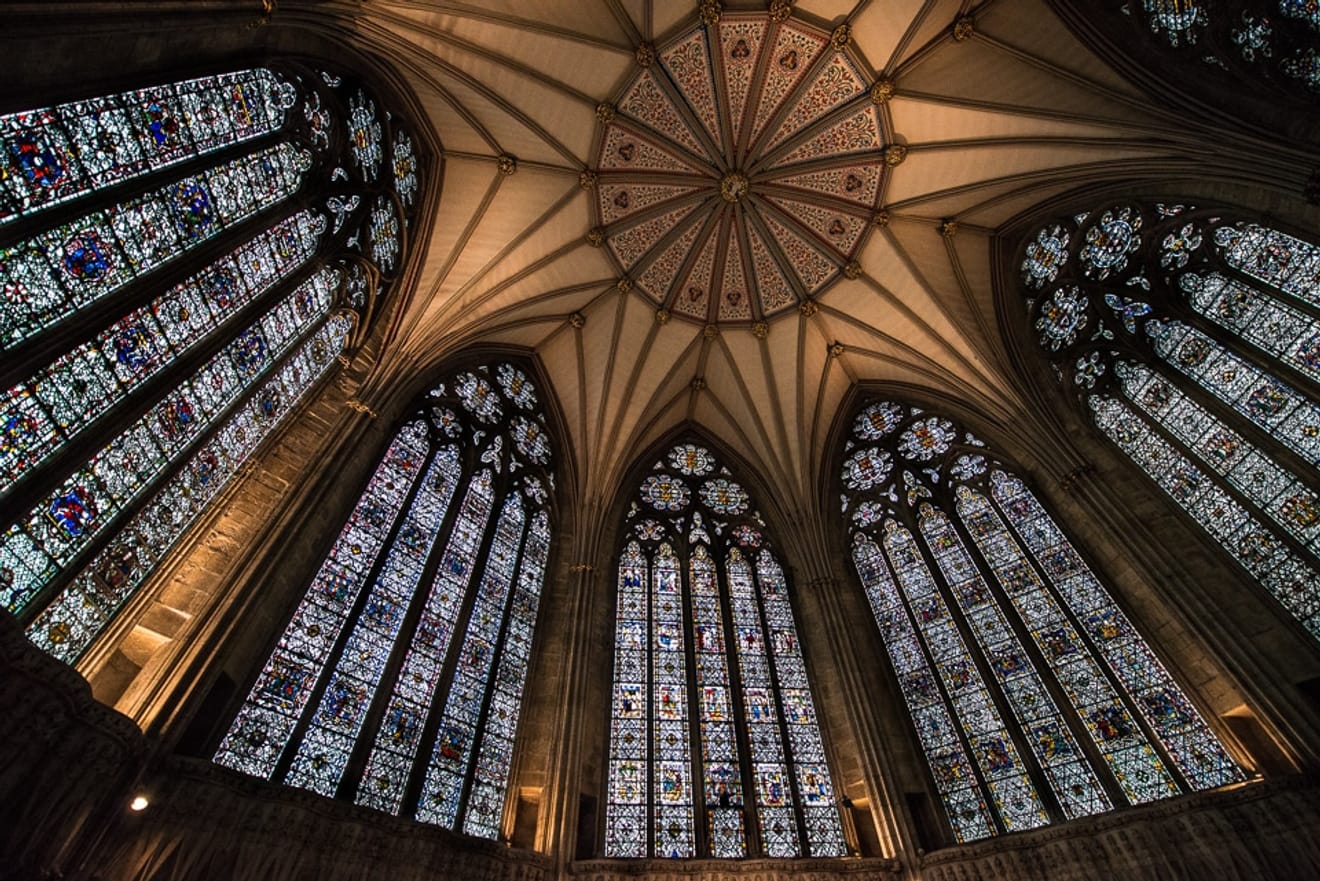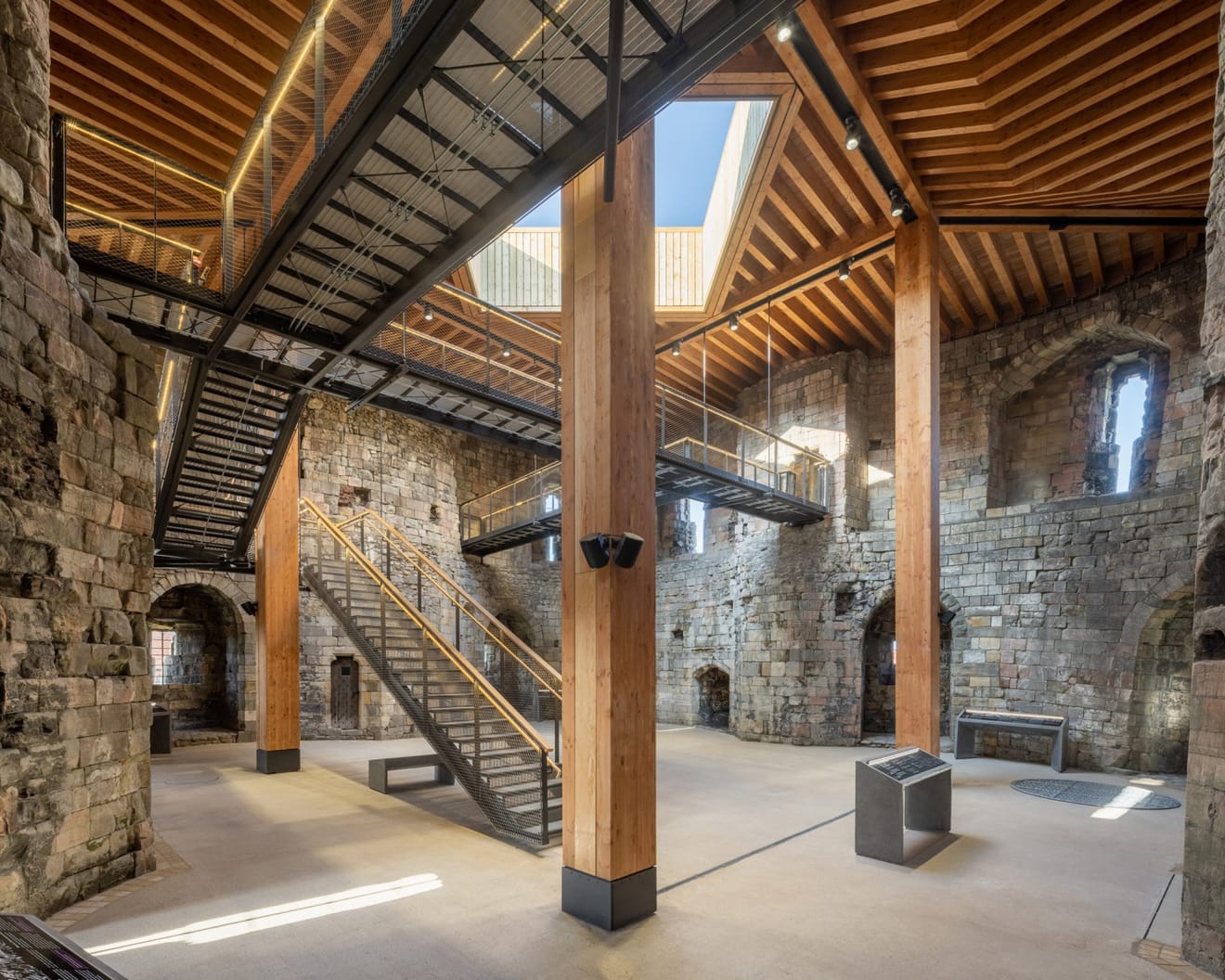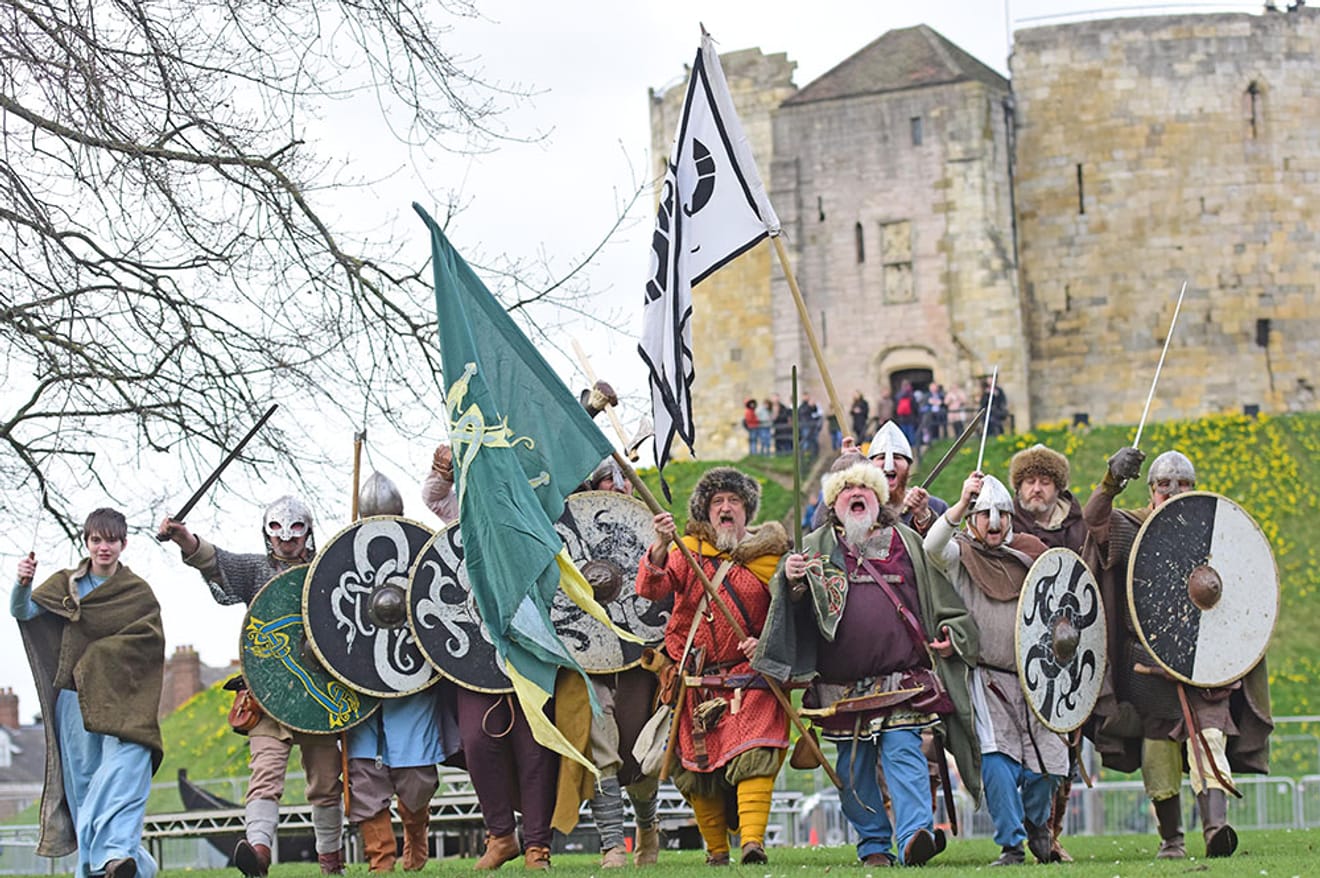Subject
- #England
- #Travel
Created: 2024-01-19
Created: 2024-01-19 15:59
In 1066, the King of England died without an heir. This led to a struggle for the throne between English nobles and Viking lords. The victor in this power struggle was William of Normandy**, who entered the fray late in the game. While observing the English situation from France, he overcame the exhausted English and Norwegian nobles who were fighting amongst themselves and became King of England. He is the ancestor of every subsequent King and Queen of England.

2023 York Viking Festival. Every February, York holds a festival commemorating the arrival of the Vikings.
In York, you can find traces of this struggle for the throne everywhere. In particular, Clifford Tower and York Minster are famous structures built by William. Because it has witnessed not only William’s conquest but also numerous historical events, it is recommended that you take a day to explore the city’s ruins and museums. If you purchase the ‘Visit York Pass’ sold by the York local government, you can visit related ruins and museums without paying any additional admission fees.**

York Minster
William became King of England in 1066, but it took a long time to gain control of the entire country. York had been Viking territory since 866 when it was conquered by them. The Vikings resisted William, the English King of French origin, and York Minster was destroyed** during William’s subjugation of them.
It is estimated that York Minster was first built around the 6th century AD. Since then, York Minster has been destroyed and rebuilt several times due to various events. The cathedral that remains in York today is based on a new structure built by William after suppressing the Danes (Vikings). Over the next 1000 years, York Minster underwent numerous repairs and renovations due to fires and other events, eventually taking on its current form.

York Minster seen through Shambles Street
York Minster is so large that it can be seen from anywhere in York today. Its interior is adorned with some of the largest and most magnificent stained glass in England. Notably, this cathedral houses statues of all the Kings and Queens of England, from William the Conqueror to the most recently deceased, Queen Elizabeth II. Even after 1000 years, we can see William’s face in York.**

Stained glass of York Minster
You can enter York Minster with a York Pass. However, you will need to pay an additional fee to climb the tower. There is no additional charge for the museum located in the basement. The museum features exhibits showcasing the history of York Minster from Roman times to the Viking and William periods.

Statue of William the Conqueror in York Minster
It’s also a good idea to walk near York Minster late in the evening. You can hear the massive pipe organ in York Minster play on the hour.

Clifford's Tower
Shortly after becoming King of England, William built a wooden York Castle south of York. However, during the Viking rebellion mentioned earlier, this wooden castle was burned to the ground. William subsequently rebuilt the castle, and it gradually transformed into its present form, constructed of stone.

Inside Clifford's Tower
Looking at York Castle, which remains in the south of York today, you might find it rather unimpressive. However, only the central structure, known as ‘Clifford Tower’, remains of the various structures that once comprised the castle. Many of the castle’s ancillary structures, including the Bailey, have disappeared during the modernization process.
To enter the tower, you must climb very steep stairs. Once you reach the top of the stairs, you can enter the tower and see the 13th-century stone structures and various explanations. (Most of the content mentioned in this article comes from the information boards I read there.) From the top of the tower, you can get a panoramic view of York city.

York citizens performing a tower attack performance at the Jorvik Viking Festival.
This is another site you can access with a York Pass. However, you cannot enter after 5pm, so you should arrive before it gets too late. If you visit York in February, you may also be able to experience the Viking Festival. People dressed as Vikings stage a performance attacking the tower.
Comments0